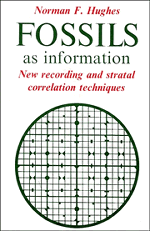Book contents
2 - Current data-handling for fossils
Published online by Cambridge University Press: 02 February 2010
Summary
Outline of current procedures. The first serious observer of a new kind of fossil names a species from the best group of specimens that can be assembled; his purpose in so doing is to classify natural observations sufficiently to be able to recognise and memorise occurrence that may prove to be usefully similar, and thus to aid the scientific community. In erecting a species an illustration, description and measurements are given together with locality details, and distinction is drawn between the new and any adjacent species which happen to have been already published. A single nomenclatural holotype is selected, and a statement on variation of specimens is provided if possible.
Following nomenclature rules, the species is attributed to a genus, and whenever possible is fully classified among all other organisms, living and fossil. With most authors there is a tendency to parsimony is erecting new species, so that attribution of the new specimens to an existing published species is always considered first.
In nomenclature the species epithet is normally stable because of the existence of the holotype, but the generic element of the species name is subject to change by any subsequent author with new ideas on classification. The generic element of the name is placed before the specific epithet and so is automatically indexed and spoken ahead of it; consequently retrieval of data is frequently complicated by generic name changes.
Additional specimens from the type locality or from anywhere else in space or time are ‘identified’ with the species and are usually list-recorded under the same name.
- Type
- Chapter
- Information
- Fossils as InformationNew Recording and Stratal Correlation Techniques, pp. 7 - 18Publisher: Cambridge University PressPrint publication year: 1989

